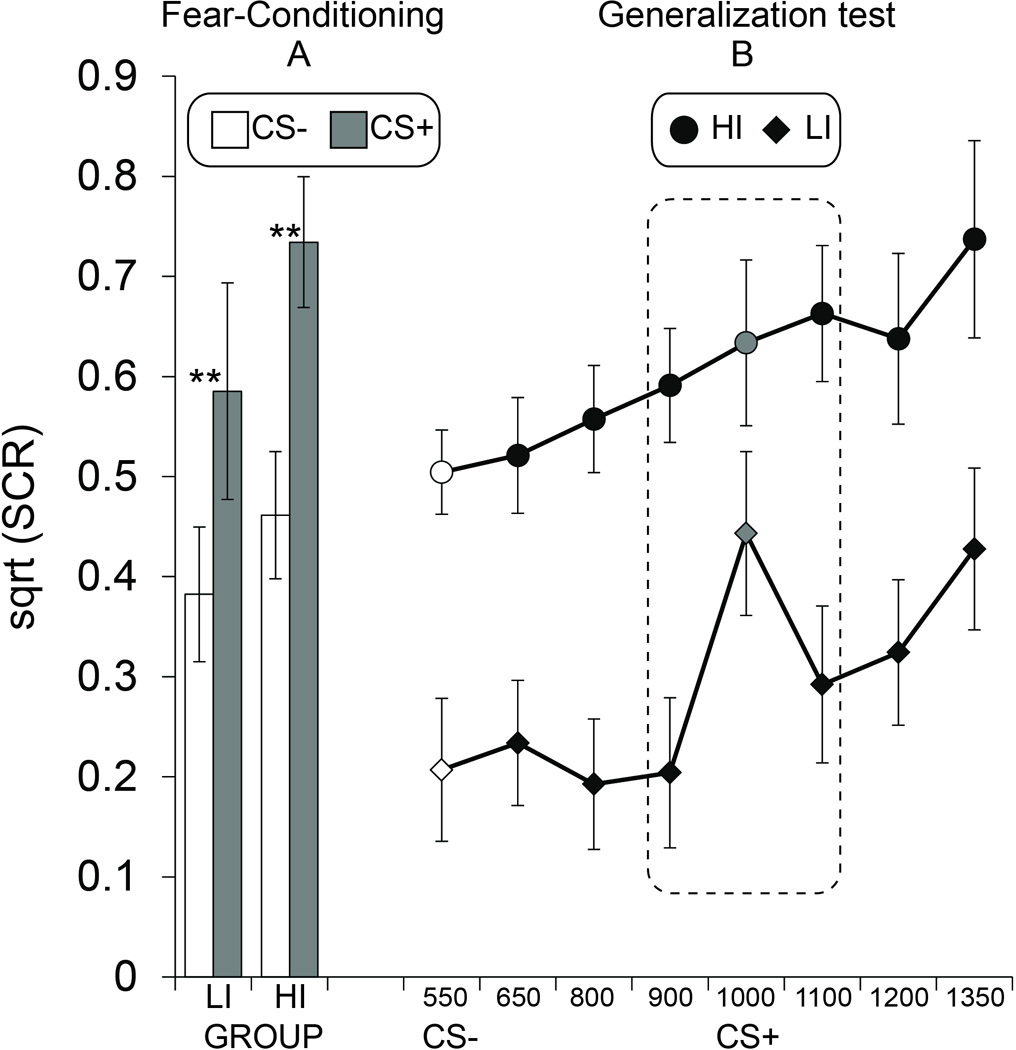Figure 2. Skin conductance responses.

(A) Fear-conditioning involving either a low-intensity (LI) unconditioned stimulus or a high-intensity (HI) US both lead to succesful fear acquisition as defined by greater SCRs on conditioned stimulus trials intermittently paired (CS+) versus unpaired (CS−) with the US. (B) The group who underwent fear-conditioning to a CS+ paired with a low-intensity US (square) produced effectively no generalization of SCRs to novel tones between the CS+ and CS− frequency. In contrast, the group who underwent fear-conditioning to a CS+ paired with a high-intensity US (circles) showed widespread generalization of SCRs. Dashed rectangle indicates a priori analysis of threat-sensitive generalization for stimuli adjacent to the CS+. Data from CS+ trials included trials unpaired with the US only. Grey and White fill denote CS+ and CS−, respectively. Error bars reflect standard error of the mean. ** P < .01.
